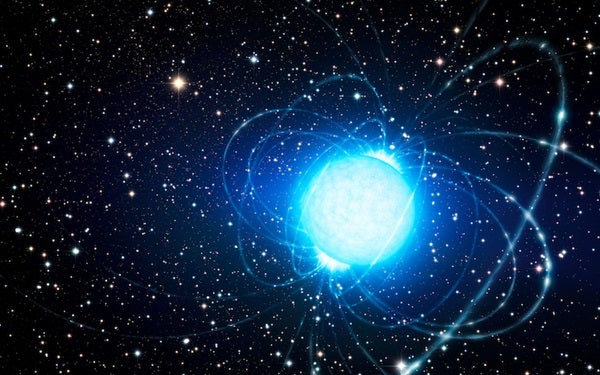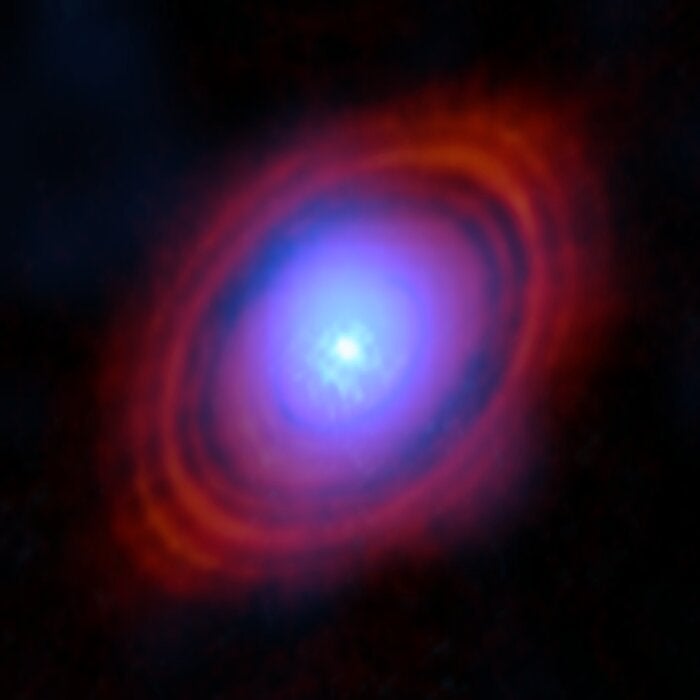The next level of “why,” however, is tougher to answer. Why do neutron stars have magnetic fields whose strengths typically range between a billion and a quadrillion times Earth’s magnetic field? An easy, and wrong, answer is that if you were to contract a star like the Sun to the size of a neutron star (maybe 15 miles [24 kilometers] in diameter) and conserve magnetic flux, you’d get about the right value. This is wrong, though, because the Sun won’t become a neutron star; instead, a neutron star originates from the core of a more massive star, and for such cores, the flux conservation argument gives far too low a magnetic field. So, this question isn’t resolved yet.
The Zeeman effect is a splitting of atomic lines due to magnetic fields. Neutron stars, however, have such huge magnetic fields that the structures of the atoms on the surface are altered. Rather than being basically spheres, the atoms become narrow (and short) cylinders aligned along the magnetic field. This should produce huge changes in the lines, rather than the small perturbations that we’re used to from the Zeeman effect.
Professor of Astronomy and Center for Theory & Computation Director, University of Maryland, College Park, Maryland









